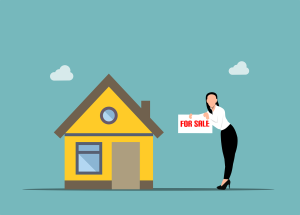
Authors: Steven Cernak and Luis Blanquez
In case you missed it on the eve of a holiday weekend, the FTC and several states settled their challenge of Amgen’s acquisition of Horizon last Friday. The case might have seemed like an odd one to antitrust and merger practitioners looking only at the last few decades of merger review; however, both the challenge and the settlement offer some lessons for future merging parties — and perhaps even the FTC itself.
Parties, Transaction, Challenge, Settlement
Both Amgen and Horizon are large pharmaceutical companies. According to the original complaint, each company produces drugs for which there are few if any competitors. Even according to that complaint, Amgen and Horizon do not compete with, supply to, or buy from each other.
The parties described the transaction as allowing Amgen to use its broader distributional reach to bring Horizon’s products to more consumers. The FTC, and later several states, alleged that Amgen was proficient at wringing profit out of its monopolized drugs in various ways, especially with pharmacy benefit managers (PBMs). The enforcers feared that Amgen would do the same with Horizon’s drugs, especially by bundling Amgen and Horizon drugs. The parties disputed that they had the ability or incentive to engage in such behavior but still offered to enter an order promising not to take such actions.
The FTC challenged the transaction in its internal tribunal and sought a preliminary injunction in federal court in the Northern District of Illinois to prevent the closing of the transaction. The states later joined that challenge. The parties countered with both antitrust arguments and constitutional challenges to the FTC’s structure and procedures, much as other parties like Illumina have.
Last Friday, the parties and enforcers settled all the challenges. The parties agreed to not bundle any Amgen product with Horizon’s two key products––Tepezza or Krystexxa––its medications used to treat thyroid eye disease (TED) and chronic refractory gout (CRG) or offer certain rebates to exclude or disadvantage any product that would compete with Tepezza or Krystexxa. Amgen agreed to seek FTC approval for any acquisition of pharmaceuticals competitive with Horizon’s. Finally, Amgen will submit to a compliance monitor and make annual reports for the fifteen-year duration of the order. Further details and analysis of the proposed order are here.
Analysis of the Challenge
The FTC’s challenge of the transaction might have looked different to merger review practitioners familiar only with challenges of proposed mergers of current competitors; however, the theory behind the challenge has some history. Unfortunately for the FTC, the last several decades worth of that history did not support the challenge.
When Congress passed and amended Clayton Act Section 7, it did not prohibit all mergers; instead, it prohibited only those whose effect “may be substantially to lessen competition, or to tend to create a monopoly.” This standard does not require the FTC to show that the merger will have the proscribed competitive effect with certainty, but it must establish that the competitive effect is more than a mere possibility.
Both Congress and the courts have emphasized that something more than a mere possibility is necessary for a successful Clayton Act Section 7 challenge. The Congressional report described the necessary finding as follows: “The use of these words means that [the amended Clayton Act] would not apply to the mere possibility but only to the reasonable probability of the prescribed effect.” (emphasis added).
The Supreme Court in Brown Shoe clearly drew the “certainties/probabilities/possibilities” distinction:
Congress used the words ‘may be substantially to lessen competition’ (emphasis supplied), to indicate that its concern was with probabilities, not certainties. Statutes existed for dealing with clear-cut menaces to competition; no statute was sought for dealing with ephemeral possibilities. Mergers with a probable anticompetitive effect were to be proscribed by this Act.
Courts recognize only a few ways that the FTC or any challenger can successfully show a probability of a lessening of competition or tendency to create a monopoly.
First, challengers like the FTC can allege that the parties to the proposed transaction currently compete. Such a “horizontal” merger can lessen competition or create a monopoly by allowing the merged parties to unilaterally raise prices or otherwise harm consumers or implicitly coordinate with the remaining competitors on similar actions. Here, the FTC did not allege that any of Amgen’s or Horizon’s products currently compete.
Second, challengers can allege that one of the parties is a “potential competitor” of the other party. Such “potential competition” mergers can lessen competition or create a monopoly by eliminating the current threat or actual entry into a new market by one of the parties to the transaction. Here, the FTC did not allege that Amgen or Horizon is a potential entrant into any of the markets in which the other party competes.
Third, challengers can allege that the parties have or could have a supplier-customer relationship. In certain circumstances, such “vertical” mergers can lessen competition or create a monopoly in a few ways, principally by foreclosing access to rival firms to inputs, customers, or something else they need to effectively compete with the merged parties. Here, the FTC did not allege that Amgen and Horizon are in or could be in a supplier-customer relationship.
Instead, the FTC appeared to rely on the “entrenchment” variant of the “conglomerate” competition theory, claiming that “Post-Acquisition, Amgen will possess the ability and incentive to sustain and entrench its dominant positions in the markets for [Horizon’s products].”
Under this theory, the FTC alleged that after the acquisition, Amgen would have both the ability and incentive to more effectively exploit the alleged monopoly power already possessed by Horizon. Unfortunately for the FTC, this theory has been abandoned as discredited since the 1970s. According to the latest version of the ABA Antitrust Law Developments, “[After Procter & Gamble in 1967], courts and the FTC applied the entrenchment theory very cautiously and liability has not been found in any case on this theory since the 1970s . . . and its subsequent antitrust decisions suggest it is unlikely that the Court will again apply [the theory].” Even the FTC itself just three years ago told an international body that “[c]onglomerate mergers that raise neither vertical nor horizontal concerns are unlikely to be problematic under U.S. merger law.”
And there is good reason for courts to have grown skeptical of the theory — it cannot support an allegation that the probable effect of a proposed merger “may be substantially to lessen competition, or to tend to create a monopoly.”
Certainly, the theory cannot support an allegation that the proposed merger probably will tend to create a monopoly. After all, under the theory, the seller’s products already enjoy monopoly power. The proposed merger would not have created any monopoly power. Here, the FTC alleged that Horizon already enjoys a monopoly with its two key products.
The theory also could not support an allegation that the proposed merger probably will substantially lessen competition. Because the theory required so many possible actions by both the parties to the transaction and third parties, the potential anticompetitive harm is nothing more than the “ephemeral possibility” that the Supreme Court has correctly said is not covered by the Clayton Act.
Here, as detailed by the parties in their brief, the following actions had to occur before the ephemeral possible harm alleged by the FTC would occur: The handful of products identified in the FTC’s Amended Complaint had to overcome significant clinical development and regulatory hurdles; AND at that hypothetical and uncertain time, those other products, though differentiated from Horizon’s products, must threaten them competitively; AND at that same uncertain future time, the alleged competitive position of Amgen’s products must not have changed such that Amgen will have the ability and incentive to bundle them with Horizon’s products in ways that will harm competition.
But even if the parties were wrong and the actions did happen, the FTC could have acted at that time by bringing a monopolization challenge. Now, if those ephermeral possibilities do occur, the FTC will have an easier time alleging a violation of the consent order.
Lessons for Parties and the FTC
For future merging parties in the pharmaceutical industry, this FTC action (and Chairwoman Khan’s statement accompanying the settlement) make clear that the agency will flyspeck every proposed transaction and challenge many more than in the past. These include the Pfizer/Seagen or Biogen/Reata pending transactions, for instance. As Henry Liu, Director of the FTC’s Bureau of Competition highlighted in the press release: “Today’s proposed resolution sends a clear signal that the FTC and its state partners will scrutinize pharmaceutical mergers that enable such practices, and defend patients and competition in this vital marketplace.” The FTC’s ongoing investigation of PBMs means that FTC actions in this area might not be confined to merger challenges.
Continue reading →
 The Antitrust Attorney Blog
The Antitrust Attorney Blog











